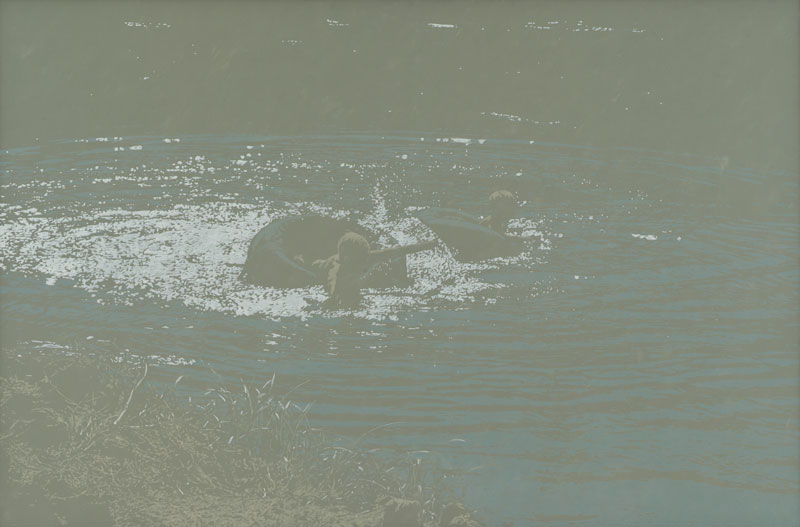 |
|||||||
Artworks

- Installation View - Leslie Reid: A Darkening Vision August 30- October 30, 2011. Carleton University Art Gallery.

- Installation View - Leslie Reid: A Darkening Vision August 30- October 30, 2011. Carleton University Art Gallery.

- Installation View - Leslie Reid: A Darkening Vision August 30- October 30, 2011. Carleton University Art Gallery.

- Installation View - Leslie Reid: A Darkening Vision August 30- October 30, 2011. Carleton University Art Gallery.

Calumet Island 254 x 426, 1975. National Gallery Of Canada.

Dargis IV 198 x 198, 1976. Private Collection.

Dargis II 198 x 198, 1976. Carleton University Art Gallery.

Popham I 142 x 188, 1978.

Vsr III: Les Valises 142 x 188, 1980. Manulife.

Var IX: Flavosc 129 x 170, 1981.

Waterditch II 129 x 173, 1982. Musée d’art contemporain de Montréal.

Genêts III 142 x 188, 1983. Canada Council Art Bank.

Denny Wood I 142 x 188, 1989. Carleton University Art Gallery.

Cantley IV 125 x 188, 1995.

Point Lobos II 122 x 122, 1991. DFAIT

Cantley VI 142 x 216, 1993.

Cantley XVII 61 x 91, 1993.

Cantley XIV 61 x 61, 1995. Private Collection.

Carisbrooke 61 x 91, 1996. Private Collection.

Cantley: Spiral 122 x 183, 1998. Private Collection.

Cantley: Wings 122 x 122, 2000. Private Collection.

Calumet: Solo 152 x 152, 2003.

Calumet: In Time 152 x 152, 2006.

Calumet: Ellipse 142 x 183, 2010.

Cape Pine: The Station 152 x 244, 2011.

Cape Pine: The Road 152 x 244, 2011.

Cape Pine: The Cairn 152 x 244, 2011.
Leslie Reid: A Darkening Vision Introductory Text from 2011 Retrospective This exhibition traces Ottawa painter Leslie Reid’s trajectory over a career that spans more than three decades. As a young artist studying in London, Reid was strongly affected by the British landscape tradition of Constable and Turner, but equally impressed by the American artist Robert Irwin’s abstract work with light and space, which focused on perceptual phenomena. Back in Canada, she sought to distill the visual and sensory experience of light in her early, abstract prints and paintings, only gradually allowing figurative images, veiled in light, to emerge in her work. The paintings presented here are themselves a distillation from a much larger body of work, grouped along three thematic axes represented by air, earth, and water. As it happens, these groupings are also roughly chronological. “Air” brings together works from the 1970s: liminally abstract, delicately nuanced paintings of the skies over Grand Calumet Island in the Ottawa River valley where, as a child, Reid spent her summers; “Earth” groups paintings from wide-ranging locations – France, England, and California – dating to the 1980s and early 1990s, when the artist was travelling for professional as well as personal reasons; while “Water” spans a lengthy period from the mid 1990s to the end of the first decade of the present century, during which Reid focused more narrowly on family property in Cantley, Quebec, where she and her husband summered with their children, returning again to the Ottawa River towards the end. These thematic divisions point to universal categories underlying Reid’s representations of landscapes whose geographical locations she always gives us in her titles, but in reality the separations are less clear than each suggests. Air and earth – or water – overlap in the paintings of coastal subjects and – if we look long and hard enough – merge into one another in luminous bands of shifting colour where a horizon line might lie in her early Calumet and Dargis1 paintings, which reveal little other than a purely sensory experience of light. Even chronology is complicated by the placement of the three Cape Pine paintings, finished shortly before the exhibition opened, with the earliest paintings of Calumet Island skies. Their subject is liminal in a different sense from the nearly abstract paintings of the 1970s. It has to do with the precarious thresholds that divide air, earth, and water on the coastal landscape of the southernmost tip of the Avalon Peninsula of Newfoundland, and with the thick, enveloping fog that makes the limits of each almost imperceptible and creates its own palpable whiteness that – unlike light – obscures and imperils rather than illuminates. For Leslie Reid, the sensory experience of the landscape is deeply imbued with feeling. Although she has always worked from photographs, her intention has never been photographic objectivity but rather to communicate the perceptual and psychological sensations provoked by the experience of a particular place. The landscapes she is attracted to extend from Calumet and Cantley, places with which she has had a long personal connection, to less familiar sites, where the quality of the space and light and the signs of human presence on the land are held in equilibrium. Whereas the sense of a lived connection with the natural phenomena of air, earth, and water is a constant in her work, over time her vision has darkened, not literally – the tonalities of her paintings vary in response to the particular place – but in a deepening emphasis on the fragility of the human connection. Nowhere is this more apparent than in her paintings of her boys playing in the pond at Cantley, or swimming in the currents of the Ottawa River at Calumet. In these dark but paradoxically bright works, she makes explicit the tension between the children’s innocent immersion and her maternal awareness of a dangerous otherness in the external world. Reid disavows an interest in the Canadian landscape tradition but the sense of wilderness, real or imaginative, and hence the anxiety of survival, is never completely absent from her work. 1. Dargis is the name of a set of rapids in the Ottawa River where it flows around Grand Calumet Island.Diana Nemiroff
|
|||||||
|
| |||||||